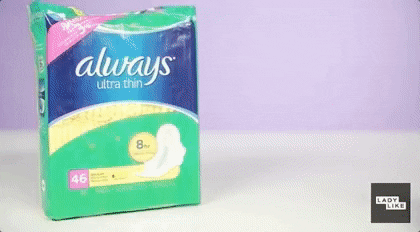Disposable menstrual products are a huge source of single-use plastic packaging. Tampon applicators, for example, ultimately find their way into marine environments posing as detrimental a threat to marine life as plastic straws do
In January, South Africa joined the Ellen MacArthur Foundation’s global plastic pact network which encourages multilateral collaboration to accelerate the transition towards a circular economy for plastics.
The pact was developed by the Worldwide Fund for Nature (WWF-SA) in partnership with the South African Plastics Recycling Organisation (Sapro) and United Kingdom-based organisation, Wrap. Retailers and manufacturers such as Massmart, the Clicks Group, Unilever and Tiger Brands have committed to eliminating unnecessary and problematic single-use plastic packaging through redesign of products for reuse, recycling or composting and increasing the demand for recycled plastic use as opposed to virgin plastic use, among other commitments.
Unfortunately, there is a glaring absence of major sanitary product producers such as Procter & Gamble, Kimberly Clark and Lil-lets.
Yet, the approximate 16-million South Africans who experience regular menstrual cycles, (aged 15-49), generate an estimated 52.4-million kilograms of sanitary product waste — destined for landfills and sewer systems — on an annual basis.
A life-cycle assessment of tampons by the Royal Institute of Technology in Stockholm to determine their ecological footprint revealed how carbon intensive the cultivation, processing, distribution, and eventual disposal of tampons is. The largest effect was attributed to the production of plastic tampon applicators and the adhesive plastic strips on pads, which are manufactured from low-density polyethylene (LDPE), a product derivative of fossil fuels.
In terms of most fossil fuel intensity, pads are astonishingly 90% plastic. The annual use of sanitary products leaves a carbon footprint of 5.3kg of CO₂ equivalents per person.
Tampons are manufactured from a blend of cotton and rayon. Cotton requires pesticides and extensive land for cultivation. It is also considered to be a water-intensive crop, with between 7 000 to 29 000 litres of water required to grow one kilogram of cotton. Water-scarce regions depend on irrigation to make up for the shortfall. The manufacturing of wood pulp into rayon, is an energy intensive process.
A menstrual cup, on the other hand, has a lifespan of a decade; over the same period a person may consume an average of 2 640 pads or tampons. The average menstrual products a consumer unwittingly uses is 11 000 tampons or pads in their lifetime. For a consumer concerned about their environmental footprint, a good place to start would be to make the transition from fossil-fuel intensive menstrual pads or tampons to reusable products such as silicone menstrual cups, washable pads or specialised underwear.
Unfortunately, reusable hygiene products are not easily accessible for the average consumer, one is unlikely to find a reusable hygiene product that lasts more than three cycles in any commercial retailers in South Africa. Reusable menstrual cups are currently only available through online retailers. Disposable pads and tampons remain popular, because of their accessibility. This could largely be influenced by profit-driven companies that depend on clients continuously purchasing their product.
The South African feminine hygiene industry registered a sales value of R248.7-million in 2018 and a positive compound annual growth rate of 12.28% during the period 2013 to 2018.
The profitability of this market means that reforms cannot simply be left to these companies to develop altruistic intent, instead institutions such as the departments of social development, environmental affairs and water and sanitation need to collectively organise to address the environmental costs associated with landfilling, greenhouse gas emissions and routine blockage of pipes and joints as a result of disposal sanitary products while simultaneously offering people who menstruate security and comfort by making reusable feminine hygiene products readily available in school and at clinics.
This would also actively address various Sustainable Development Goals:
- 5 – Achieve gender equality and empower all women and girls:
- 6 – Ensure availability and sustainable management of water and sanitation for all:
- 12 – Ensure sustainable consumption and production patterns;
- 13 – Take urgent action to combat climate change and its impact; and
- 14 – Conserve and sustainably use the oceans, seas and marine resources.
Although great progress has been made recently, with the eradication of the tampon tax and the provision of free sanitary products, menstruation is a monthly occurrence that cannot be left to the inconsistent supply chain of the government.
Reports have surfaced regarding the misappropriation of funds dedicated to the provision of sanitary pads for indigent girls to the tune of R4-million, resulting in a surplus of 2 702 065 of sanitary pads packages. The surplus pads were distributed to relatively affluent schools and even used as shin guards by boys during soccer practice. These menstrual products were trivially discarded contributing further to the burden of waste.
The distribution of medical-grade silicone menstrual cups would provide young girls and indigent women the security to menstruate without concern for when they will next receive a supply of disposable sanitary products for nearly a decade, while drastically reducing the amount of menstrual waste landfilled.
Safety issues associated with disposable sanitary products such as infections, toxic shock syndrome and exposure to pesticides-treated products are negligible with the use of menstrual cups. A randomised crossover trial conducted by Beksinska M.E et al, comparing menstrual cups to tampons or sanitary pads among women in low-resource settings in Durban showed considerable favour towards the menstrual cup. Comparatively, menstrual cups were rated significantly better for comfort, blood collection, appearance and preference and likelihood of continued use.
The distribution of medical-grade silicone/latex or other reusable menstrual products would offer South Africans a secure, comfortable means of managing menstruation while simultaneously addressing the expensive and destructive effects that menstrual products have on the environment.



